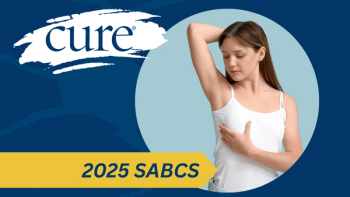
Treatment Has High Response Rates in Aggressive Lymphoma
Axicabtagene ciloleucel had high response rates in patients with non-Hodgkin lymphoma in a phase 2 study.
According to a prespecified interim analysis of the phase 2 portion of the ZUMA-1 trial, axicabtagene ciloleucel (KTE-C19), an anti-CD19 CAR T cell therapy, had a 76 percent objective response rate (ORR) and a complete response rate (CR) of 47 percent for patients with aggressive non-Hodgkin lymphoma (NHL) after at least one month, according to results presented at the 2017 BMT Tandem Meeting.
The durable CR rate at three months was 39 percent, which was six-fold higher than that in historical controls, announced lead investigator Frederick L. Locke, M.D. Axicabtagene ciloleuce was successfully manufactured in 99 percent of cases, with an average 17-day turnaround from apheresis to clinical site. There were 22 sites involved in the study.
“This is the first pivotal multicenter study of anti-CD19 CAR T cells in refractory aggressive NHL,” he said. “ZUMA-1 pivotal results are consistent with earlier axicabtagene ciloleuce outcomes in aggressive NHL. This includes single-center NCI studies, which show 12-month CR rates of 44 percent and 47 percent. The phase 1 portion of ZUMA-1 showed a 43 percent ongoing CR rate at 12 months.”
The study demonstrated that adverse event management could be effectively implemented across 22 sites, “most with no prior CAR T cell therapy experience,” said Locke, translational researcher, Department of Blood and Marrow Transplant and Cellular Immunotherapy, H. Lee Moffitt Cancer Center.
A large patient-level meta-analysis — the SCHOLAR-1 study — showed that patients who do not respond to their last line of chemotherapy and at best had stable disease or progressive disease, or who relapsed within 12 months of autologous hematopoietic stem cell transplant, have an ORR of 26 percent and a CR of 8 percent to their next line of therapy. The median overall survival was 6.6 months.
“These patients really have no good standard of care treatment options, and new therapies are needed,” Locke said. The phase 1 results of ZUMA-1 demonstrated ongoing CRs in 43 percent of patients at 12 months.3
The phase 2 study consisted of two cohorts—cohort 1 of patients with diffuse large B-cell lymphoma (DLBCL) and cohort 2 of patients with primary mediastinal B-cell lymphoma and follicular T-cell lymphomas. Patients had chemorefractory disease and had at best achieved stable disease or progressive disease as a response to their last line of chemotherapy, or they had relapsed within 12 months of a prior autologous transplant. The primary endpoint of the phase 2 portion was ORR. The interim analysis was triggered when 50 patients in cohort 1 had at least three months follow-up.
Overall, 111 patients were enrolled and underwent leukapheresis, with 110 having adequate cells to manufacture the CAR T-cell therapy. Patients received fludarabine and cyclophosphamide preconditioning, and 101 of the 111 received axicabtagene ciloleucel. Ninety-three patients had at least one month follow-up, and of those, 62 patients had at least three months follow-up.
The median age of participants was 59 years, with about half the patients being 60 years or older. The median number of prior therapies was three, with as many as 12 received. The International Prognostic Index was three to four in 44 percent of patients. About 80 percent of patients were refractory to their last line of chemotherapy, and the remainder relapsed within 12 months of autologous transplant.
Axicabtagene ciloleucel induced rapid responses, with most evident at the first tumor assessment (30 days after infusion of CAR T cells). Of the 93 patients that had at least one month follow-up, 71 percent had a response and 38 percent had a CR. Follow-up of the trial is ongoing.
At the three-month landmark time point, 39 percent of all patients were in CR. There were seven patients with stable disease or partial response at one month who converted to CR at three months. The CR rate was 75 percent (9 of 12) in patients who relapsed post-transplant and 47 percent (23 of 49) in those refractory to two or more lines of therapy.
The treatment effect was consistent across key covariates. No variables were found to predict for response or lack of response to axicabtagene ciloleucel. Twenty-five patients received corticosteroids and 35 received tociluzimab; no correlation was observed between response and the administration of these therapies to treat toxicities.
Of the 93 patients included in the interim analysis, 92 percent had a grade 3 or higher adverse event. Most of these were hematologic toxicities associated with fludarabine and cytotoxic chemotherapy. The most frequent grade 3 or higher adverse events were neutropenia (63 percent), anemia (42 percent), leukopenia (40 percent) and febrile neutropenia (29 percent). Encephalopathy, which occurred in 19 percent of patients, was the most common manifestation of neurologic events.
Thirteen percent of patients had grade 3 or higher cytokine release syndrome (CRS) and 29 percent had grade 3 or higher neurologic events. To treat these events, 38 percent of patients received tocilizumab, 17 percent received corticosteroids, and 17 percent received both. There were three fatal events excluding those from progressive disease, one from hemophagocytic lymphohistiocytosis, another of cardiac arrest in the setting of CRS, and the third from pulmonary embolism. There were no cases of cerebral edema.
“CRS and neurologic events were generally reversible,” Locke said. “All CRS events resolved except for one cardiac arrest in the setting of CRS. There were three neurologic events ongoing at the data cut-off.”
Additional analyses showed that CAR T cell levels were evaluated in peripheral blood; the median CAR T cell level for patients in CR at three months was six times higher than those not in CR at three months. Similarly, the median CAR T cell level was 2.5 times higher for patients with grade 3 or higher neurologic events. The peak CAR T cell expansion occurred between seven and 14 days.
Forty-six cytokines and chemokines were measured in the serum. Elevated levels of IL-15 and IL-6 were seen in patients with grade 3 or higher CRS and grade 3 or higher neurologic events. IL-2 receptor alpha and IL-10 levels were elevated in patients with grade 3 or higher CRS but not in patients with grade 3 or higher neurologic events.
Kite Pharma, the company developing axicabtagene ciloleucel, started a rolling submission to the FDA for the CAR T-cell therapy in December 2016. The company is seeking approval for patients with relapsed/refractory aggressive B-cell NHL who are ineligible for autologous stem cell transplant. The rolling submission is expected to be finished by the end of March.





